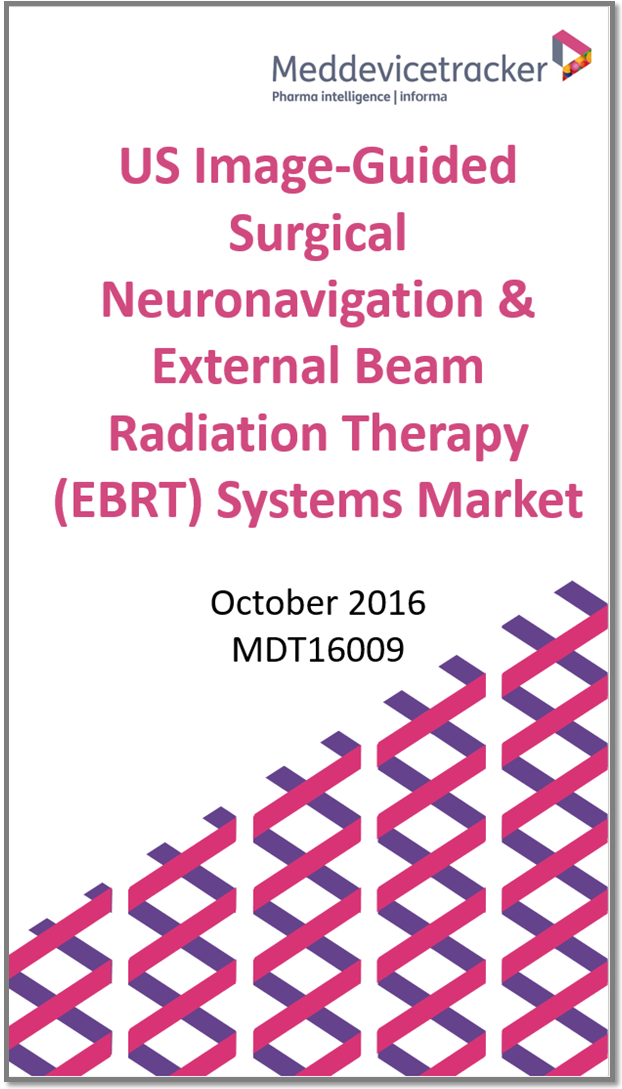Report Detail

Purchase Price: $3,750.00
US Image-Guided Neuronavigation and EBRT Systems Market, October 2016
The US image-guided surgical (IGS) neuronavigation and external beam radiation therapy (EBRT) systems market totaled more than $284m in 2015. This market, as defined in this report, includes the following highly sophisticated technologies used in the image guidance and treatment of various neurological conditions:
- image-guided surgical (IGS) neuronavigation systems
- external beam radiation therapy (EBRT) systems used in cranial/brain neurological (“neuro”) procedures
Presently, the scope of common neurosurgical applications for IGS techniques includes biopsy and resection of brain tumors; cyst aspiration; brain abscess; pallidotomy; thalamotomy; shunt placement in hydrocephalus; excision of cerebral tissues implicated in epilepsy-related and other types of seizures; as well as deep brain stimulation (DBS) in movement diseases, such as dystonia and Parkinson’s disease.
There are two categories of radiation therapy: EBRT, which applies the radiation to the tumor externally, and internal radiation therapy, during which radiation is applied internally (brachytherapy). By far the most common form of conventional radiation therapy is EBRT, which commonly delivers radiation from outside the patient’s body using a multi-purpose linear accelerator, or linac, system that is typically configured as a C-arm gantry platform. Presently, EBRT for neuro applications is performed with two types of platforms: cranial-dedicated Gamma Knife systems or stereotactic radiosurgery (SRS), and linac-based systems. EBRT used for applications involving the brain is referred to as SRS, an advanced ablative radiation treatment used to treat tumors and other disorders in the brain. The focus of this report is on cranial applications, or SRS.
